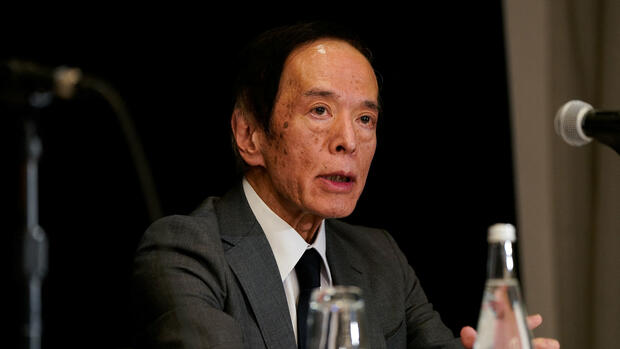He has only been at the head of the Japanese central bank since April.
(Photo: Reuters)
Dusseldorf Higher prices are becoming more and more entrenched in the Japanese economy. This is shown by the development of core inflation in March: it is still at its highest level for more than 40 years.
According to data published by the statistical office on Friday, prices excluding energy and food rose by 3.8 percent compared to the same month last year. Economists had again expected a slower increase.
The core inflation rate is a good indicator of the extent to which prices are rising across the board. The rate in Japan is now back below the four percent mark. However, it was last this high in 1981.
The fresh price data sharpens the focus ahead of the next Bank of Japan (BoJ) meeting on Thursday and Friday (April 27th and 28th). It is the first under the leadership of the new central bank governor Kazuo Ueda. This cannot be assigned directly to a monetary policy wing and is also the first post-war central bank chief with a scientific background.
His predecessor had strictly adhered to yield curve control. The interest rate for ten-year bonds may fluctuate by a maximum of 50 basis points around zero. The interest rate for short-term bonds is minus 0.1 percent. This instrument is expensive and distorting, according to many experts. In no other industrialized country are there still negative interest rates. The central bank also buys bonds in very large volumes and is the largest shareholder in the country.
This strategy is aimed at fighting deflation – and it hardly fits with price data above expectations. The inflation rate in March was above the BoJ’s 2% target for the twelfth straight month.
>> Read here: Japan starts a new monetary policy experiment
There has therefore been a lot of speculation on the markets in recent weeks about the monetary policy line of the new central bank governor. However, at his first press conference as governor, Ueda argued that he wanted to continue with the strategy for the time being, although he also said: “Every monetary policy program has both positive and negative aspects. We must evaluate them objectively and choose a policy that is most appropriate.” His words over the next week will therefore deserve special attention.
Japan’s banks are proving resilient
In any case, the domestic banking system appears to be well prepared for the upcoming challenges. In its semi-annual financial stability report, the Bank of Japan attests to the robustness of the institutions.
Overall, the Japanese financial system has shown itself to be stable, write the currency watchdogs. The banks had an adequate capital base and coped well with the global tightening of financing conditions.
There is no risk of contagion due to the recent turbulence surrounding the collapse of the Silicon Valley Bank (SVB) in the USA. No Japanese bank is in a situation comparable to that of the SVB. Nevertheless, the future outlook is subject to a high degree of uncertainty.
More: Investors expect tighter monetary policy from the ECB again
